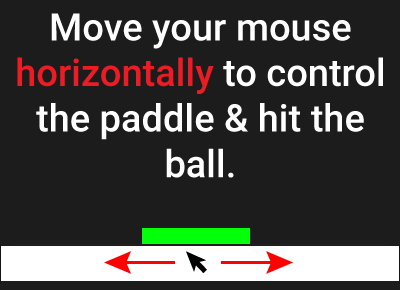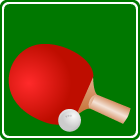


3 scores max per player; No foul language, show respect for other players, etc.
Name | Score | Date | ||
|---|---|---|---|---|
| 1 | ||||
| 2 | ||||
| 3 | ||||
| 4 | ||||
| 5 | ||||
| 6 | ||||
| 7 | ||||
| 8 | ||||
| 9 | ||||
| 10 |

Game: PONG
Aim: Break the bricks, score points
Method:
Use your mouse or tap in the white bar to move the paddle horizontally to bounce the ball up the screen. Answer questions when you break the white bricks, score big points with the yellow bricks.
Your final score is based on correct answers, bricks broken and time taken.

finley
"Independent events"
PONG game to practice
'Prime factors' for 4th grade
4th grade / Multiply + Divide / Prime factors / Prime factors
Identify prime factors
Prime numbers are special numbers that can only be divided by 1 and the number itself without leaving a remainder. In other words, they have exactly two factors. So the number 3 is a prime number because it is divisible only by 3 and 1. The first few prime numbers are 2, 3, 5, 7, 11, 13, 17, and 19. Many numbers are not prime, they are composite numbers - numbers that have more than two factors. These numbers can be divided by different numbers, not just 1 and themselves. For example, 4 can be divided by 1, 2, and 4.
Prime factorization is a way to break down a composite number into smaller pieces that are all prime numbers. These smaller prime numbers are called "prime factors". To work out the prime factors of a number, start with the smallest prime number, 2, and see if it divides the given number without leaving a remainder. If it does, write down the number 2 and the result of the division. If it doesn't, move on to the next smallest prime number, 3, and try again. Repeat this process until you've found all the prime factors.
What are the prime factors of 10?
- First, divide 10 by the smallest prime number, which is 2.
- 10 ÷ 2 = 5. The result is another prime number, 5.
- So, the prime factors of 10 are 2 and 5 (10 = 2 x 5).
The prime factors of 10 are 2, 5
What are the prime factors of 60?
60 can be divided by 2 without leaving a remainder: 60 ÷ 2 = 30. Write down 2 and 30.
Now, check if the result (30) can be divided by 2 without leaving a remainder: 30 ÷ 2 = 15. It can, so write down 2 and 15.
The result (15) cannot be divided by 2, so move on to the next smallest prime number, 3. Check if 15 can be divided by 3 without leaving a remainder: 15 ÷ 3 = 5. It can, so write down 3 and 5.
The result (5) is a prime number, so we've found all the prime factors:
The prime factors of 60 are 2, 3, 5
In this topic you are asked to find the prime factors of numbers from 6 to 100.
Related topics
With our Pong math game you will be practicing the topic "Prime factors" from 4th grade / Multiply + Divide / Prime factors. The math in this game consists of 16 questions that ask you to identify the prime factors of numbers up to 105.

In our version of Pong/Breakout, there are 3 types of bricks for you to break: green bricks are worth just 2 points; yellow bricks are worth a whopping 50 points; breaking white bricks, which are worth 10 points, wins you a math question from the topic you have chosen.
You start with 5 lives. If the ball goes below the paddle, you lose a life and 200 points. The game ends when you answer all 10 questions or lose all your lives.
Notes
- This version of Pong is a one player game to learn or revise math
- Our PONG for math is a scoring game - play a few times and set a personal best score!
- Addictive! You may end up trying to avoid the white bricks so that you can play for longer...
UXO * Duck shoot * The frog flies * Pong * Cat and mouse * The beetle and the bee
Rock fall * Four in a row * Sow grow * Choose or lose * Mix and match

Latest leaderboard entries: Pong




How to play PONG to practice
'Prime factors' for 4th grade

- Select the PONG game from the games selection page.
- On the settings page there are brief instructions on how to play.
- Click on PLAY to enter the game screen.
- The clock starts when the bell rings.
- Move your mouse (or finger tap or drag in the white bar for touch screens) to move your paddle left and right.
- Knock the ball back up the screen to break the bricks.
- You start with 1000 points and 5 lives.
- You lose 1 point every 2 seconds.
- 200 points are deducted from your score for each life lost
- Green bricks score 2 point, yellow bricks score 50 points, white bricks score 10 points and open the question screen.
- For each question click/tap on the correct answer or enter it using the keyboard.
- Wrong answers lose you 25 points but correct answers win you 50 points.
- Continue breaking bricks and answering questions until you have cleared all the question bricks.
- The game also ends if you lose all 5 of your lives.








